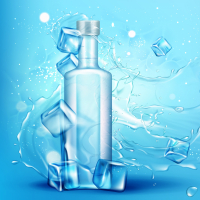
Background
Infection can interfere with the normal wound-healing process. In order to reduce the risk of infection, wounds are routinely cleansed to remove dirt, contamination or impurities. In this review, a wound is defined as a break in the skin.
What is the aim of this review?
The aim of this review was to investigate the effects of wound cleansing using different types of water (e.g. tap water, distilled, boiled) compared with no cleansing or with other solutions (e.g. normal saline). We measured effectiveness by looking at wound-related infection rate and wound healing.
Researchers from Cochrane searched for all randomised controlled trials (RCTs) relating to this question and found 13 relevant studies. RCTs are studies where people are chosen at random to receive different treatments. Allocating participants in this way provides the most reliable evidence about possible relationships between the treatment used and any reported health outcomes.
Key messages
We compared wound cleansing with tap water, distilled water, cooled boiled water or saline with each other or with no cleansing. It is unclear if any of these interventions have an effect on the number of wounds which become infected. It is also unclear if they have an effect on healing (number of wounds healed; change in wound size; and rate of wound healing); costs; pain; or patient satisfaction.
What was studied in the review?
Wounds are commonly cleansed to prevent infection. The cleansing solution can be tap water, distilled water, cooled boiled water or saline. Tap water is commonly used in the community because it is easily accessible, efficient and cost-effective; however, there is an unresolved debate about its use. We compared the effects of cleansing wounds with water with other types of water, normal saline and no cleansing.
We included all RCTs that compared wound cleansing using different types of water (e.g. tap water, distilled, boiled) compared with no cleansing or with other solutions (e.g. normal saline). Participants were from any age group and any setting e.g. hospital, community, nursing homes, general practice, wound clinics. We excluded trials that compared solutions for dental procedures or for patients with burns.
What are the main results of the review?
We included results from 13 RCTs in this review, with a combined total of 2504 participants. The participants were adults or children with a range of different types of wounds who were treated in the community, emergency departments or hospital wards. Eight trials assessed cleansing with tap water compared with cleansing with normal saline. Three trials compared cleansing with tap water with no cleansing. Two trials assessed cleansing with distilled water compared with cleansing with normal saline, one trial also assessed cleansing with cooled boiled water with cleansing with normal saline and cleansing with distilled water compared with cleansing with cooled boiled water.
We compared wound cleansing with tap water, distilled water, cooled boiled water or saline with each other or with no cleansing. It is unclear if any of these interventions have an effect on the number of wounds which become infected. It is also unclear if they have an effect on healing (number of wounds healed; change in wound size; and rate of wound healing); costs; pain; or patient satisfaction.
We are unsure if the interventions have an effect because not enough participants received each intervention to reliably assess their effects. The way that the studies were designed and conducted also means that the results may not reliably reflect the effects of the interventions. This is partly due to uncertainty over how participants were assigned to the treatments. It is also possible that many participants and healthcare professionals were aware of which treatments were being used.
How up to date is this review?
We searched for studies that had been published up to 20 May 2021.

